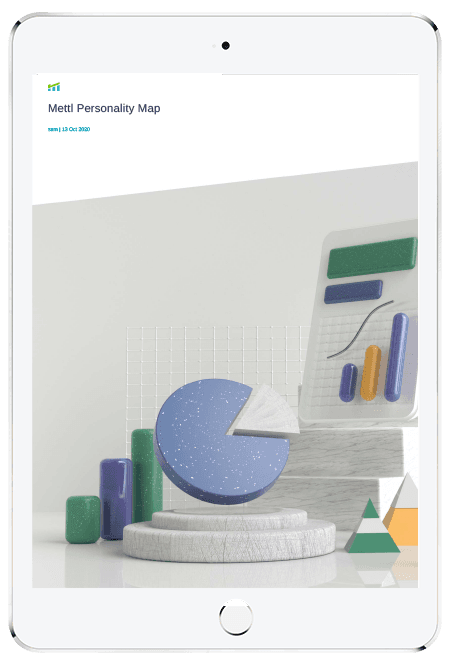Pilot Aptitude Test to Hire Suitable Candidates for the Aviation Industry
Pilot aptitude test helps you hire the best candidates for the specific profile of an aviation pilot by holistically measuring the behavioral attributes and cognitive abilities required for this role.
Ready to Use
Psychometric, Aptitude
0-2 years
Moderate
80 Minutes
154 Questions
Pilots/ Pilots trainees
English Philippines, Mexico Spanish, Spanish, Portuguese (Brasil), English India, English UAE, English Global
Inside This Assessment
Due to the risky nature of the job, it is imperative to assess an individual’s personality and deduce if he/she fits into the role of a pilot. Mercer| Mettl's pilot aptitude test is one such tool created to evaluate and qualify candidates for the specific profile of an aviation pilot. In addition, it helps you identify the behavioral attributes and cognitive abilities required by a person taking up this role, to perform the job.
SKILL LIBRARY
Competency Framework
Get a detailed look inside the test
Competency Under Scanner
Cognitive Competencies
Behavioral Competencies
Competencies:
Demonstrating the ability to critically assess situations to identify assumptions, draw inferences and evaluate arguments and select a course of action among several alternative possibilities.
Demonstrating the ability to understand, comprehend and convey messages to be delivered effectively in a precise manner with clarity by formulating grammatically correct sentences.
Demonstrating the ability to analyse information, detect patterns and relationships, and solve complex and intangible problems and to perform well in a new/novel situation.
Demonstrating thoroughness and accuracy in accomplishing a task and also capturing every minute detail, anywhere, at any point of time.
Demonstrating the ability to create a mental image of an object in order to reach a certain conclusion.
Competencies:
The ability to interact with crew members/ATCs, face to face by voice, media or written mode to manage air traffic.
The ability to be driven by a sense of duty and commitment to one’s work leading to awareness of the processes and systems governing the organization.
The tendency to lead a group of people by consistently inspiring them to work together, assisting them where necessary and timely resolving conflicts.
The ability to perform a job in a manner that minimizes hazards to oneself, others, and the environment. It also indicates one's ability to maintain a physical and psychological work environment that contributes to the well-being of others.
The ability to maintain a rational and objective demeanour when faced with stressful or emotional situations- a measure of self-composure in a difficult situation.
Customize This Test
Flexible customization options to suit your needs
Choose easy, medium or hard questions from our skill libraries to assess candidates of different experience levels.
Add multiple skills in a single test to create an effective assessment. Assess multiple skills together.
Add, edit or bulk upload your own coding questions, MCQ, whiteboarding questions & more.
Get a tailored assessment created with the help of our subject matter experts to ensure effective screening.
The Mercer | Mettl Advantage
Frequently Asked Questions (FAQs)
1. What if a person takes an assessment in a socially desirable manner or fakes or manipulates the responses?
The assessment has been designed on the ‘semantic differential’ format, which requires candidates to consider their preferences and choose between two " equally desirable" statements. The assessment also delivers ‘instructional warnings,’ where candidates are informed that distorted or fake responses will invalidate the assessment. The assessment tool can also identify specific response patterns that may indicate fake responses.
2. Can we determine the appropriate levels of behaviors required for a specific job role in an organization?
We have taken all necessary steps to reduce the possibility of test takers trying to present themselves in a socially desirable manner. For example, the test follows a ‘semantic differential’ format, which makes it hard to ‘guess’ the appropriate response. Additionally, the items are presented in a format that requires one to consciously think about one's preferences and then choose a more ‘desirable’ statement. The tool also identifies specific patterns of the responses and can indicate if candidates attempt to respond dishonestly.
3. Will your assessment score candidates who are applying for jobs appropriately?
Yes. Mercer | Mettl has undertaken efforts to include a diverse and representative sample during assessment development. Further, Mercer | Mettl also offers options to optimize assessment content and scoring based on the context provided by our clients. Ask us about our local norms and validation, and we’ll gladly assist you with them.
4. Can a company's competency framework be mapped to the assessments?
Yes. We can provide customized assessment solutions that consider the organization’s requirements and competency framework to determine the appropriate behaviors that indicate success in the organization's context. Please write to Mercer | Mettl with the request for assistance.
5. How do we determine the norm group's proficiency level thresholds?
The normal probability distribution of scores of a particular norm group determines the proficiency levels required.
6. How have norms been decided for MPP?
The sample used during test development is used to determine norms, which are also recalculated regularly based on new data to ensure relevancy and accuracy in the information they provide about candidates. Further, a simple validation exercise can determine different norms that are more relevant to your organization. Please get in touch with us for more details.
7. What if the reports generated for the psychometric assessments differ from the actual behavior, attitude or aptitude of the person?
We have taken all necessary steps to reduce the possibility of test takers trying to present themselves in a socially desirable manner. For example, the test follows a ‘semantic differential’ format, which makes it hard to ‘guess’ the appropriate response. Additionally, the items are presented in a format that requires one to consciously think about one's preferences and then choose a more ‘desirable’ statement. The tool also identifies specific patterns of the responses and can indicate if candidates attempt to respond dishonestly.
